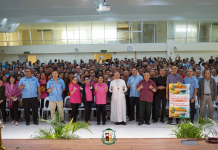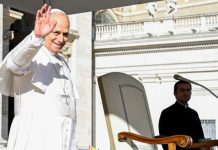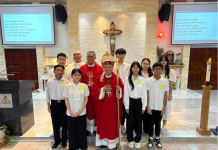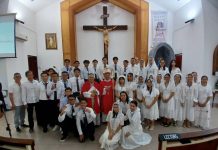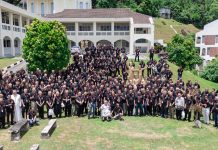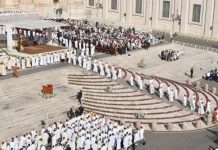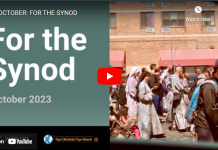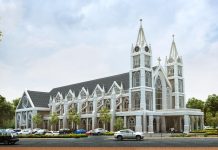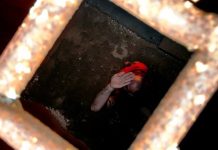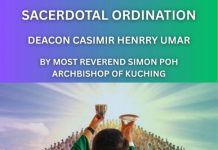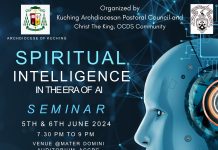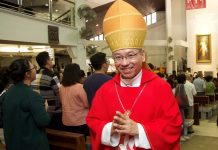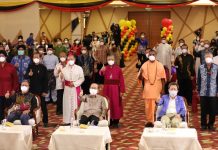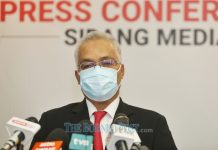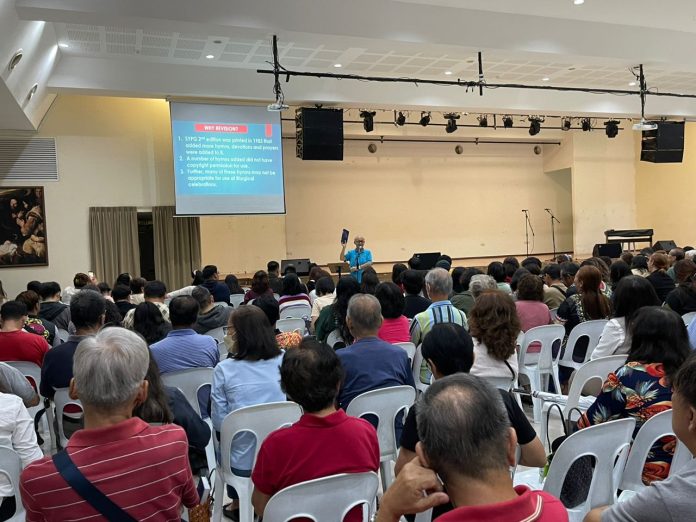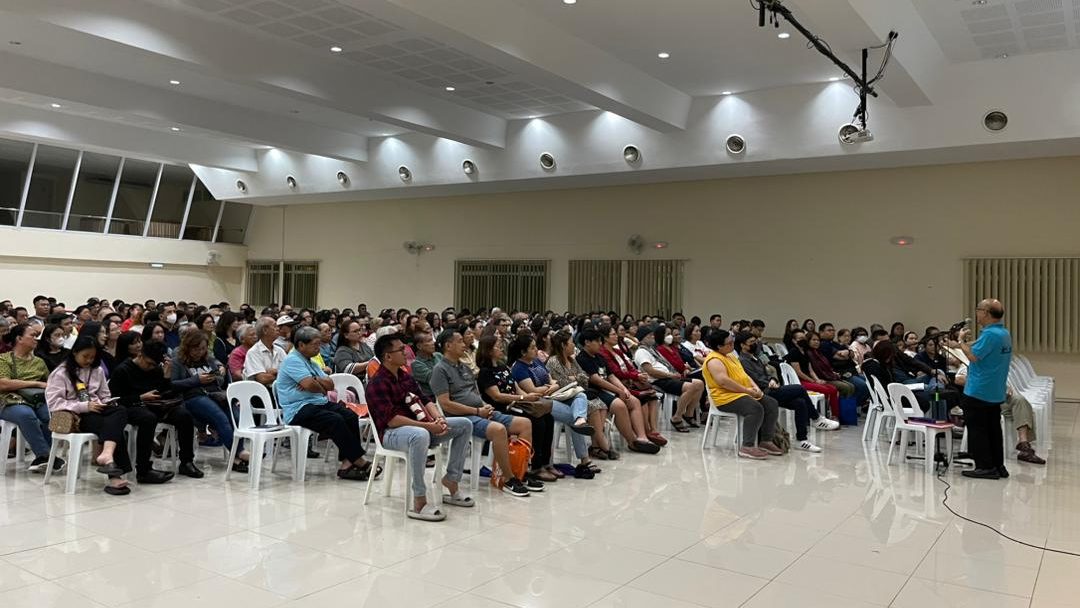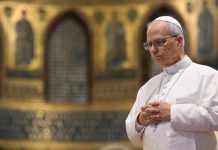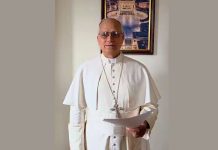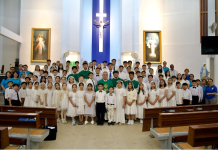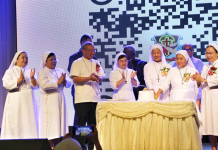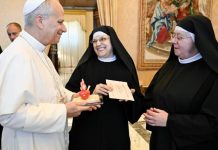By Stephen Chin
KUCHING — The Liturgical commission of the Archdiocese of Kuching under Fr Vincent Chin recently organised a formation session on the new Sing Your Praise To God (SYPG) hymnal. The sessions were held over three nights; 10–12 October, starting from 7.30 pm to 9.30 pm at the Grand Hall of the ACCPC.
More than 400 persons from the parishes of St Joseph’s Cathedral, Holy Trinity Kenyalang, Blessed Sacrament BDC, St Peter’s Padungan, Our Lady Star of the Sea Bintawa, Sacred Heart 7th Mile, St Mark’s Batu Kawa, Chapel of Mother Mary Stutong, Carmelite Chapel and St Ann’s Padawan attended.
Neil Mah from the Stella Maris parish of Kota Kinabalu led the sessions for the first two nights. Neil, a trained musician in sacred music, was one of the key team members in the compilation of the new SYPG. The team consisted of the following:
Chairman: Fr Leonard Lexson (Kuala Lumpur)
Secretary: Eileen Ng (Singapore)
Members:
Fr Vincent Chin (Kuching
Fr Jude Miranda (Penang)
Fr John Yoew (Malacca/Johore)
Neil Mah (Kota Kinabalu)
Robert Loh (Singapore)
Sandra Ann (KL)
Dr Chan Lek Lim (Kuching)
Dr Geraldine Law (Kuching)
John Ng (Malacca/Johore)
The process involved the committee with the help of the diocese, reviewed the hymns in the old SYPG under the categories of ‘always use’, ‘seldom use’ and ‘never use’. The committee also re-visited the liturgical and co-related documents of the Second Vatican Council. With constant consultation with the Bishops, the committee formulated guiding principles for determining the hymns to be included as well as adding the antiphon texts and music notation. Very importantly, copyright owners were closely into and acknowledged.
Thus, the principle task of the committee was to select hymns appropriate for Mass on Sundays of the Ordinary Time and for the Liturgical seasons. Briefly, the basic principles adopted by the committee in the selection of the hymns are:
- Sacred music chosen must aid, support, elevate and better express the actions of the sacred liturgy as propounded in the Catechism of the Catholic Church (1157).
- The music to be used must take into account the capacities of those who are to sing the music and does not hinder the active participation of the people.
- The purpose of the liturgical words and action of the music must glorify the Lord and sanctify the people at worship.
- Each hymn has to be judged on its doctrinal, literary and musical merits.
Practical exercises were conducted to enable a better understanding of the principles, and Neil also gave the participants some general tips on chanting.
On the third night, Benedict Lo led the session through “Good Choir practices”. A survey was conducted the night before and some of the topics the choir members were interested in are as follows: vocal techniques, new hymns and songs, how to sing hymns properly, how to serve God better and how to select the appropriate hymns. As the interested topics were all sessions in themselves, only a brief introduction to the topics was managed. It was decided that more of such sessions will need to be organised.
Julian Gabriel, a choir leader from St Joseph’s Cathedral said, “the workshop was truly an eye-opener. I discovered the richness and intricacies of hymn selection deemed as sacred music, as well as learning how to sing as a choir; one voice, one sound. I hope there will be more sessions like this in the future. A beautiful experience in fellowship with the young and old from all the various parishes”.
Veronica Tallian from one of the choirs of Sacred Heart Church said, “Sesi formation ini sangat berguna untuk penyediaan Misa terutama pemulihan lagu Misa. Kita juga mempelajari teknik nyanyian supaya melodi diaplikasi untuk lagu Misa. Semoga formation boleh diulangi, dan dipanjangkan dalam jangkamasanya dalam masa depan. Terima kasih kepada penyampai-penyampai dalam formasi ini”.
For Julian Faylona from St Peter’s Padungan, she said, “To be able to learn the history of the original SYPG and the new SYPG makes us appreciate the monumental task and co-ordination with all parishes throughout Malaysia. Equally enlightening are the fundamental criteria on how the hymns are chosen to tie in with the liturgy and tips on proper singing in a choir setting. Lastly, members of the church choir should make it a habit to remind themselves that our role is to lead the congregation in worship and sing with the intent of encouraging participation for all”.
Overall, all felt that the formation sessions were informative and relevant especially with regards to linking the liturgy to sacred music. All hope to serve better by leading the congregation to a fuller participation in our eucharistic celebration.


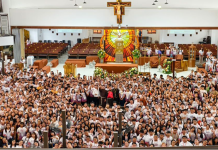
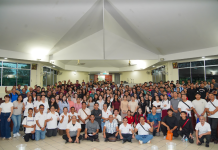
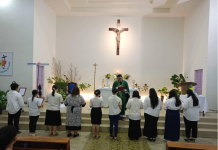
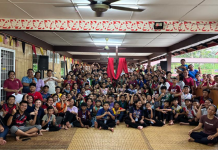



,团长(右三),以及小军友们。(图:刘谊恒(Moses)-218x150.png)
